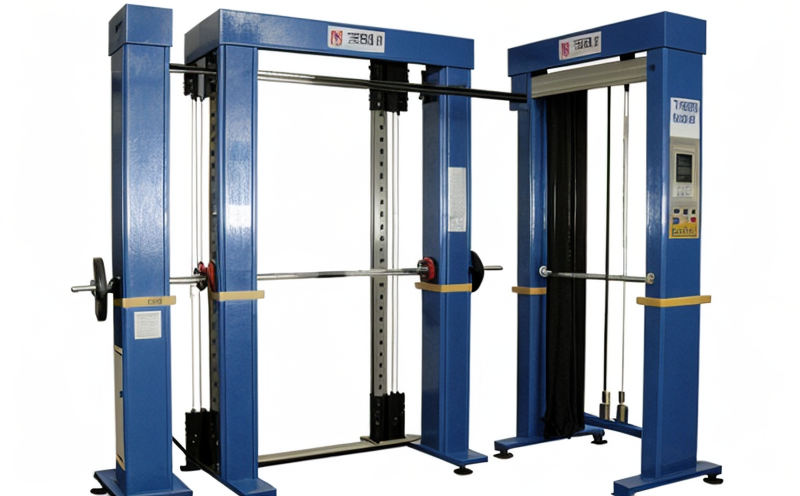GB T 5453 Air permeability of fabrics
The GB/T 5453 standard specifies a method for determining the air permeability of fabrics. This test is crucial in the textile industry as it helps manufacturers understand how breathable their products are, which is particularly important for products like clothing, medical gowns, and other items that require breathability.
GB/T 5453 applies to woven and knitted fabrics made from natural or synthetic fibers. The test measures the amount of air that can pass through a specified area of fabric under certain conditions. This information is vital for ensuring that products meet the desired performance standards, especially in sectors where breathability impacts user comfort and health.
The testing procedure involves clamping a specimen between two plates, creating a controlled environment where air pressure is applied across the fabric. The air permeability value is calculated based on the volume of air that passes through the sample per unit area over time. This measurement helps in assessing how much airflow can be expected from the product.
Specimen preparation for this test requires careful attention to detail. Fabric samples should be cut with care, ensuring they are free from defects and consistently sized. The edges must also be properly finished to avoid any edge effects that could influence the results.
The testing apparatus used in this procedure includes an air permeability tester, which is designed specifically for this purpose. This equipment provides precise control over the pressure applied and measures the airflow accurately. It’s essential that the tester is regularly calibrated to ensure reliable and repeatable results.
The GB/T 5453 standard also specifies acceptance criteria based on expected performance levels. Compliance with these standards ensures that products meet industry expectations regarding breathability, which can significantly impact consumer satisfaction and product longevity.
In summary, the GB/T 5453 air permeability test is a critical tool in textile manufacturing, providing insights into fabric breathability. This data is invaluable for quality control, R&D, and ensuring compliance with international standards.
Why It Matters
The importance of the GB/T 5453 air permeability test cannot be overstated in the textile industry. Breathable fabrics are essential for various applications ranging from everyday clothing to specialized medical garments. Here’s why this test matters:
- Comfort and User Experience: Breathable fabrics enhance user comfort by allowing moisture vapor to escape, which is crucial for maintaining a healthy microclimate next to the skin.
- Health Benefits: In medical applications, breathable garments can prevent overheating and reduce the risk of heat-related illnesses.
- Aesthetic Appeal: Breathable fabrics often have better drape and shape retention, leading to improved product design and aesthetics.
- Lifetime of Product: Better breathability can lead to a longer product life by reducing moisture buildup that could otherwise degrade the fabric over time.
Understanding air permeability is not just about comfort; it’s also about performance. For instance, in high-performance athletic wear, fabrics need to be breathable enough to allow heat and moisture to escape while still providing insulation where needed.
Benefits
- Enhanced Product Quality: By ensuring that fabrics meet the required breathability standards, manufacturers can improve product quality and reliability.
- Informed Decision-Making: Testing allows for informed decision-making during the design and development phases of new products.
- Compliance Assurance: Compliance with international standards like GB/T 5453 ensures that products meet regulatory requirements, enhancing market acceptance.
- Consumer Satisfaction: Products that perform as expected in terms of breathability are more likely to satisfy consumer expectations and build brand loyalty.
The results from the air permeability test can also be used for marketing purposes. For example, a product’s superior breathability can be highlighted as a key feature to attract customers seeking high-quality garments.
Competitive Advantage and Market Impact
- Innovation Leadership: Companies that invest in thorough testing like GB/T 5453 demonstrate their commitment to innovation, which can set them apart from competitors.
- Cost Efficiency: Understanding breathability early in the development process can save costs by avoiding costly redesigns due to subpar performance.
- Consumer Trust: Products that meet stringent testing standards like GB/T 5453 are more likely to gain consumer trust and preference.
- Market Expansion: Meeting industry standards opens up opportunities for expanding into new markets where similar standards are in place.
The market impact of the GB/T 5453 test is significant. It ensures that products perform as expected, which can lead to increased sales and customer satisfaction. This standard also contributes to the overall improvement of the textile industry by promoting quality and reliability.





